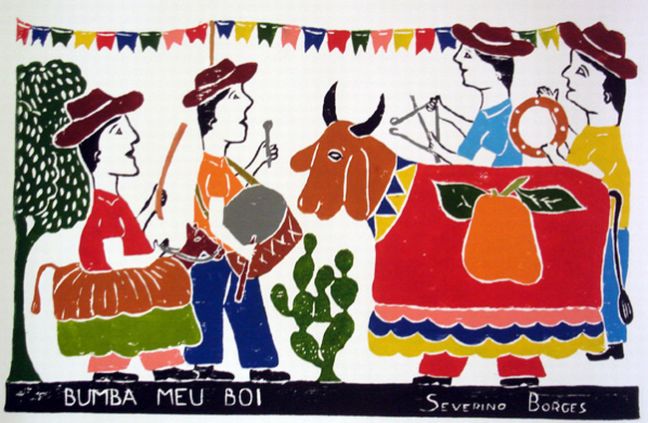Chau do Pife
Ninguém Anda Sozinho
2006
Tracks:
01. Lamento Sertanejo
02. Vai Lá Pra Ver Se É
03. O Casamento do Pife
04. Forró Nascente
05. Nas Curvas do Forró
06. Raízes de Alagoas
07. De Eu e Tu, Quem Tem Mais
08. Casinha Branca
09. Merengue Pra Lá de Bom
10. Niguém Anda Sozinho
11. Saudade de Não Sei o Que
Ninguém Anda Sozinho
2006
Tracks:
01. Lamento Sertanejo
02. Vai Lá Pra Ver Se É
03. O Casamento do Pife
04. Forró Nascente
05. Nas Curvas do Forró
06. Raízes de Alagoas
07. De Eu e Tu, Quem Tem Mais
08. Casinha Branca
09. Merengue Pra Lá de Bom
10. Niguém Anda Sozinho
11. Saudade de Não Sei o Que
♫☆`*♥¸¸.•*¨*•♫☆`*♥¸¸.•*¨*•♫
♫☆`*♥¸¸.•*¨*•☆♫`*♥¸¸.•*¨*•♫
"Nobody Walks Alone" Chau do Pife is a popular artist of Alagoas, Northeast, revered to for his prowess with the pife, a kind of bamboo flute, in the case of Chau the pife is of aluminum. Imagine great instrumental solos with forró and interesting pife & accordion: that is what this disc contains.*♥*
The tradition of the “Ternos de Pife”, “Bandas de Pife” or “Esquenta muié” is the name that is already part of our cultural expression, as is well known and we can do part of the soul of Alagoas. Two bands are well known, that of which appeared in Caruarú Arapiraca Caruarú and headed there taking that name and that of Marechal Deodoro, and beyond two soloists who became famous, the first of João Do Pife, considered the King of Pife and I am now presented to them, without shadow of doubt, the new King, and he already has a name, it is Chau Do Pife the heir to the tradition left over the years by João, who unfortunately left us two years ago.
Chau is a native of Boca da Mata, situated in the forest zone of Alagoas, we can say Master Pife this is that he is the son of the people who know the art of playing as pife Main today accounts for this instrument that is part of the Cultural Traditions and Folk Art and northeastern Alagoas. Chau always says: "I am among those who think it is for do, has to be done well, that's how I do my music. " Nobody walks alone is title of this LP and one of his tracks, and has an arrangement that is a real magic, the sound extracted the chords of the instrument, a more rudimentary, found in almost all continents, but in our region, has an unmistakable sound and it makes our artist infeitiçados our ears. Since the tracks "Lamento Sertanejo" and "Roots of Alagoas" Chau presents us with two compositions that give a true interpretation in his Pife with what call roots music, pure root Alagoas, acompqanhado the accordion by Tiao Marcolino, son of Colonia Leopoldina land of Luiz Wanderley.
poetic translation again thanks to google :-)
In northeast Brazil, on the rural lands, people use a bamboo fife named Brazilian Fife (in Brazil its called Pife Nordestino or just Pife, and pronounces like Peef). This fife is a mix of Native American flute traditions with European fife traditions. The groups that use this instrument use only flute and percussive elements in their music, in a profusion of Native American, African and European traditions.
♥






































%20-26%2066%20centre%20-5%2031.jpg)










































+Front.jpg)
















